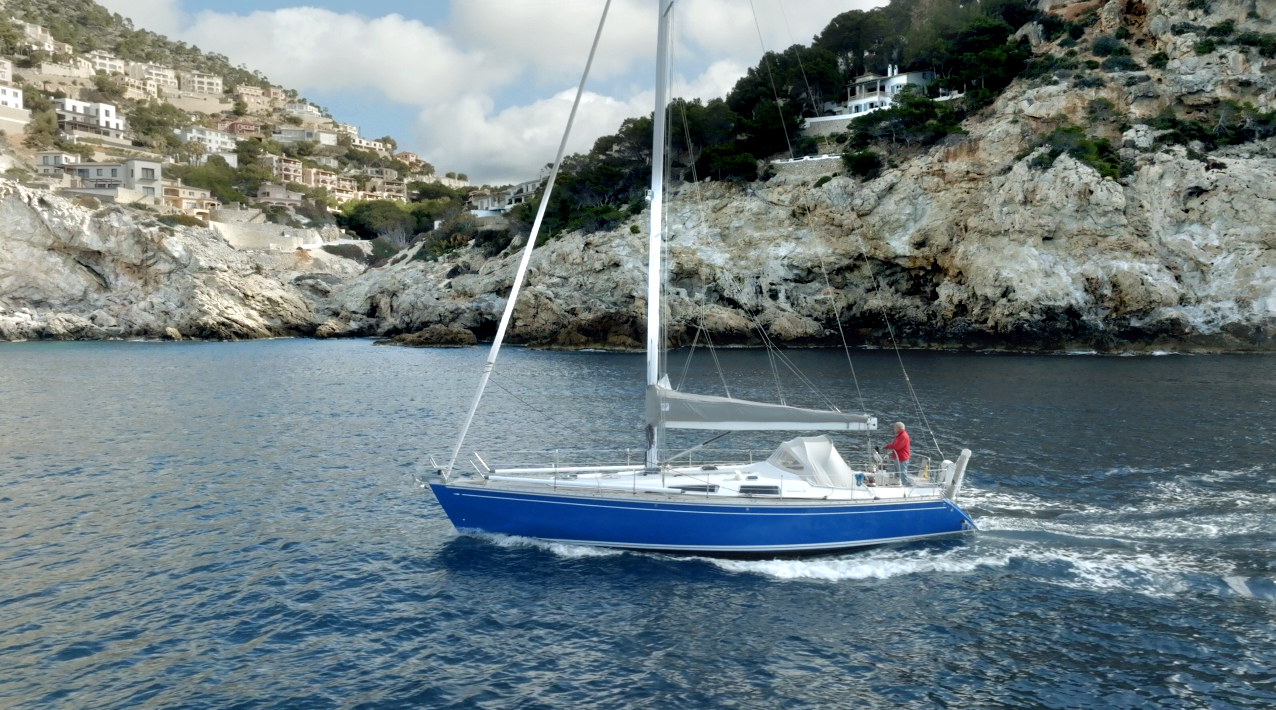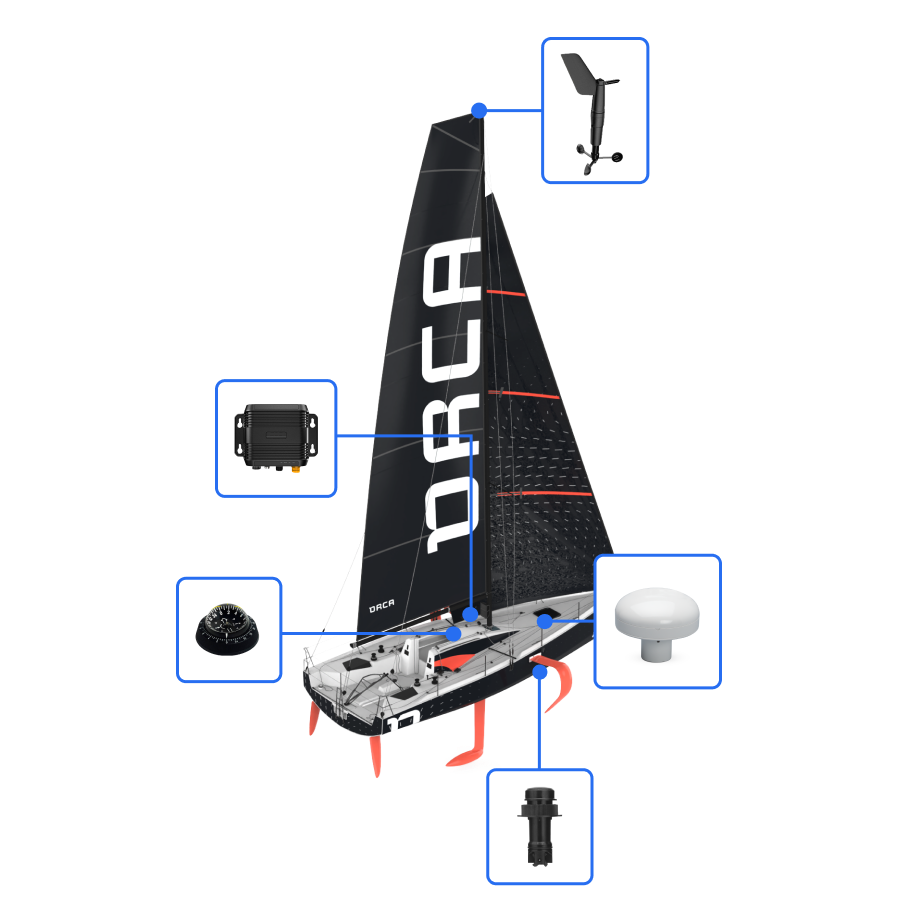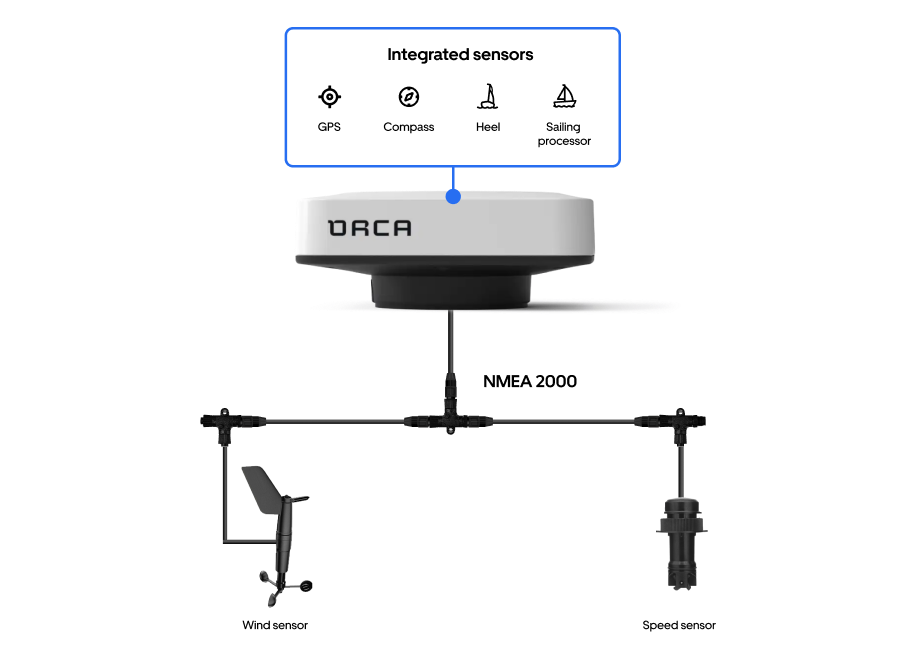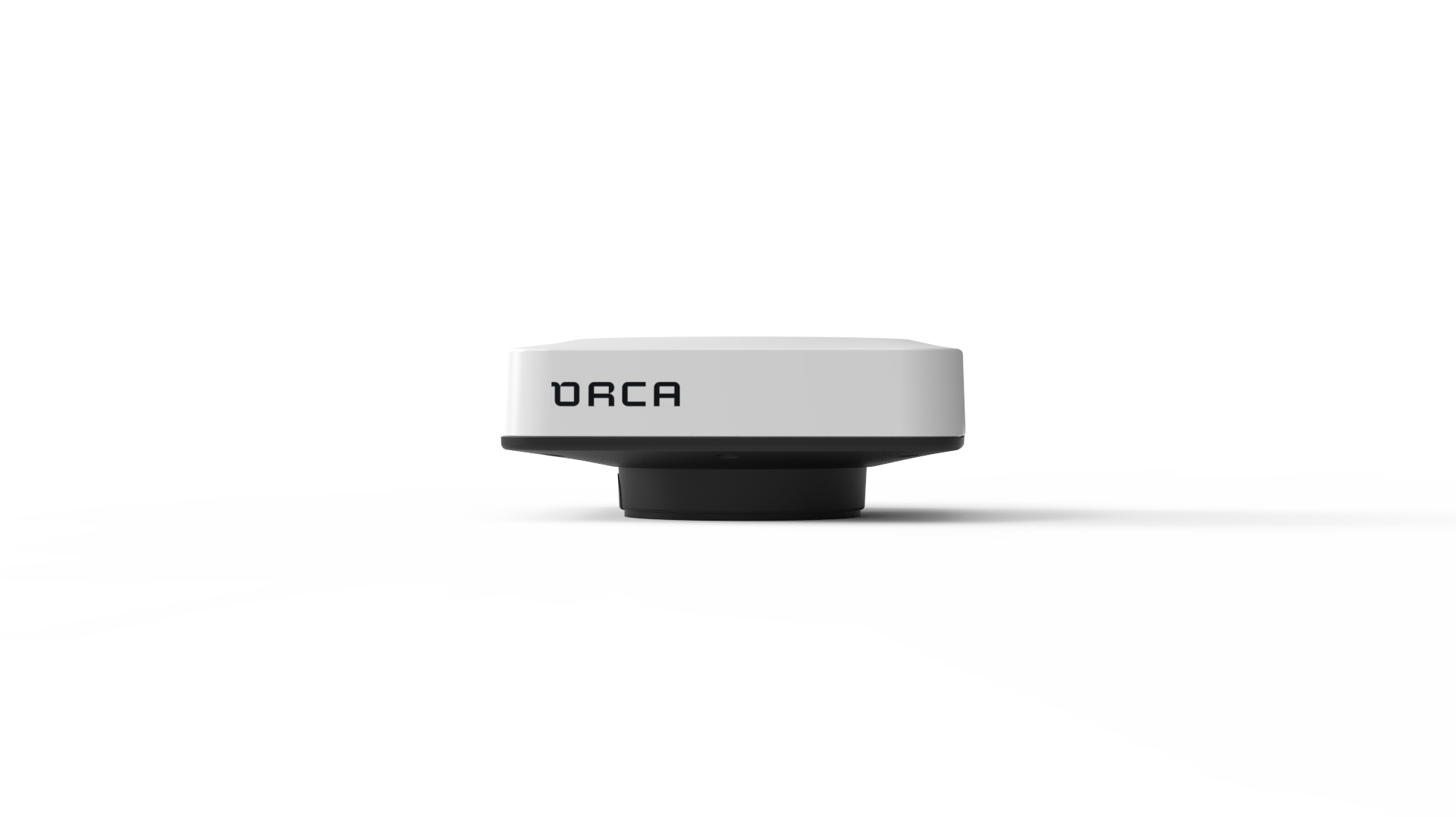All Articles
Your guide to sailing electronics
June 6, 2023 • 2 min read
Your guide to setting up sensors for the ultimate navigation system.

Modern technology continues to give sailors better information about their sailing performance, but it can be easy to get lost in the sea of options. This article will give you an introduction to sailing sensors and some suggestions for what you may want to get for your boat.
How do electronics and sensors help you sail better?
In the realm of sailing science, the most important metrics sailors care about are true wind speed and true wind direction.
Keeping track of wind shifts, and laylines, and measuring your sailing performance against your Polar Diagram is important if you want to optimize sailing efficiency. Modern electronics help you with this, which gives you an edge in racing and just makes sailing more fun.

The most important sailing sensors.
Which equipment do you need to accomplish this?
To calculate true wind information, and monitor your vessel performance, you need:
Wind sensor – apparent wind speed and direction
Speed Through Water Sensor – for STW
GPS – for SOG and COG
Compass – for determining your boat's heading
Heel sensor – to monitor heel and compensate wind data for heel
Sailing processor – to interpret sensor data into useful true wind, currents, and performance information
How does the Orca Core fit into your navigation system?
The Orca Core connects to thousands of devices, from transducers to wind sensors and engine gateways via NMEA 2000, but it also comes with built-in sensors and processing.
The Orca Core has a built-in heel sensor, compass, and GPS. On top of this, it also functions as a sailing processor.

Sailing Instruments in NMEA2000 network
With an Orca Core, all you need is a Speed Through Water Sensor along with a wind sensor, and you'll have accurate and reliable wind and performance information in Orca. Read on to learn what we recommend for racing- and cruising-oriented sailors.
The wind sensor
Your wind sensor is the most important sensor. When selecting a wind sensor, there are several factors to consider:
Update rate: It is recommended to choose a sensor with a high update rate, preferably 10Hz or higher, to ensure the wind data is accurate. A slow update rate will reduce accuracy in heavy sea or when you are tacking and gybing. Where possible, avoid ultrasonic wind sensors, as these apply a lot of filtering and dampening inside the sensor, which delivers poor and inaccurate wind data.
Reliability: Get a wind sensor that is known for its durability and reliability, as it will be exposed to the weather and undergo constant motion – even when you are not sailing. If you leave your maintenance to a yard or service professional, you should consider getting a sensor they have experience working with or can offer a good deal on.
Cabled vs. non-cabled: The decision between a cabled or non-cabled wind sensor depends on your mast height, the convenience of installation, and your budget. Cabled sensors are generally recommended for taller masts, while wireless sensors are easier to install but are typically twice as expensive.
Vertical wane vs. non-vertical wane: Vertical wane wind sensors reduce the effect of upwash and downwind acceleration on your wind sensor. Because of this, they require less calibration to be accurate but are often more expensive.
For racers seeking optimal performance, we recommend these models which meet the criteria for high update rates, reliability, and accuracy:
B&G WS710 Vertical Wind Sensor – The 0.8m carbon spar elevates the wind sensor into clear airflow. This means downwind wind speed and angle will be more accurate and you'll need less calibration for true wind tacking (£2,369.99)
For cruisers prioritizing convenience and cost-effectiveness, we recommend:
Garmin gWind™ Wired Transducer (£549.99)
B&G WS310 Wind Pack (£610)
Raymarine Wired Masthead Wind Transducer. We'd recommend the long-arm configuration for less true wind tacking (from £899.95)
Speed Through Water Sensor
If you are sailing in an area with any amount of currents, you want your wind data "water referenced", not "ground referenced". To get this, you need a Speed Through Water sensor. This sensor, combined with the GPS also lets you calculate the direction and speed of currents.
The quality difference of these sensors is significantly noticeable at lower speeds and at very high speeds. Beyond this, there are several things to consider:
Update Rate: Similar to the wind sensor, a high update rate of 10Hz is desirable for accurate speed calculations.
Depth/Temperature: Consider whether you also want depth and water temperature data. Triducers combine speed, depth, and temperature measurements in a single housing, and are priced almost similarly to standalone Speed Through Water sensors, so it is a cheap upgrade for a lot of value.
Calibration: We recommend selecting a sensor that supports direct calibration. This allows you to fine-tune the sensor output according to your specific boat and installation location.
Maintenance and Replacement: Speed Through Water sensors require regular cleaning and calibration. Choose a sensor that is easy to maintain and replace, ideally with a standardized through-hull fitting for quick installation and potential replacements.
Ultrasonic vs. paddle-wheel: Ultrasonic sensors provide superior accuracy, particularly at lower speeds, and require far less maintenance because they have no moving parts. They are generally 3-5x more expensive than paddle-wheel sensors. Racers who prioritize precision and performance, or cruisers who don’t want to think about maintenance, may find the investment worthwhile.
For racers seeking optimal speed and performance, we recommend:
Airmar UDST800 Ultrasonic Sensor – offering ultrasonic speed, depth, and temperature in one single housing with no moving parts (from £549.38)
Cruisers looking for models that can provide a balance between performance and affordability, along with ease of maintenance and replacement:
Airmar’s ST800 and ST850 Smart™ Sensors (prices from £131.84)
The Sailing Procesor
Great sensors are important, but you'll also need a device that captures your boat's raw data and turns it into meaningful insights. The Orca Core is just that device. If you are curious a sailing processor does – read up on the Sailing Processor guide.

The Orca Core's built-in sensors and powerful processor make it an incredibly powerful Sailing Processor.






